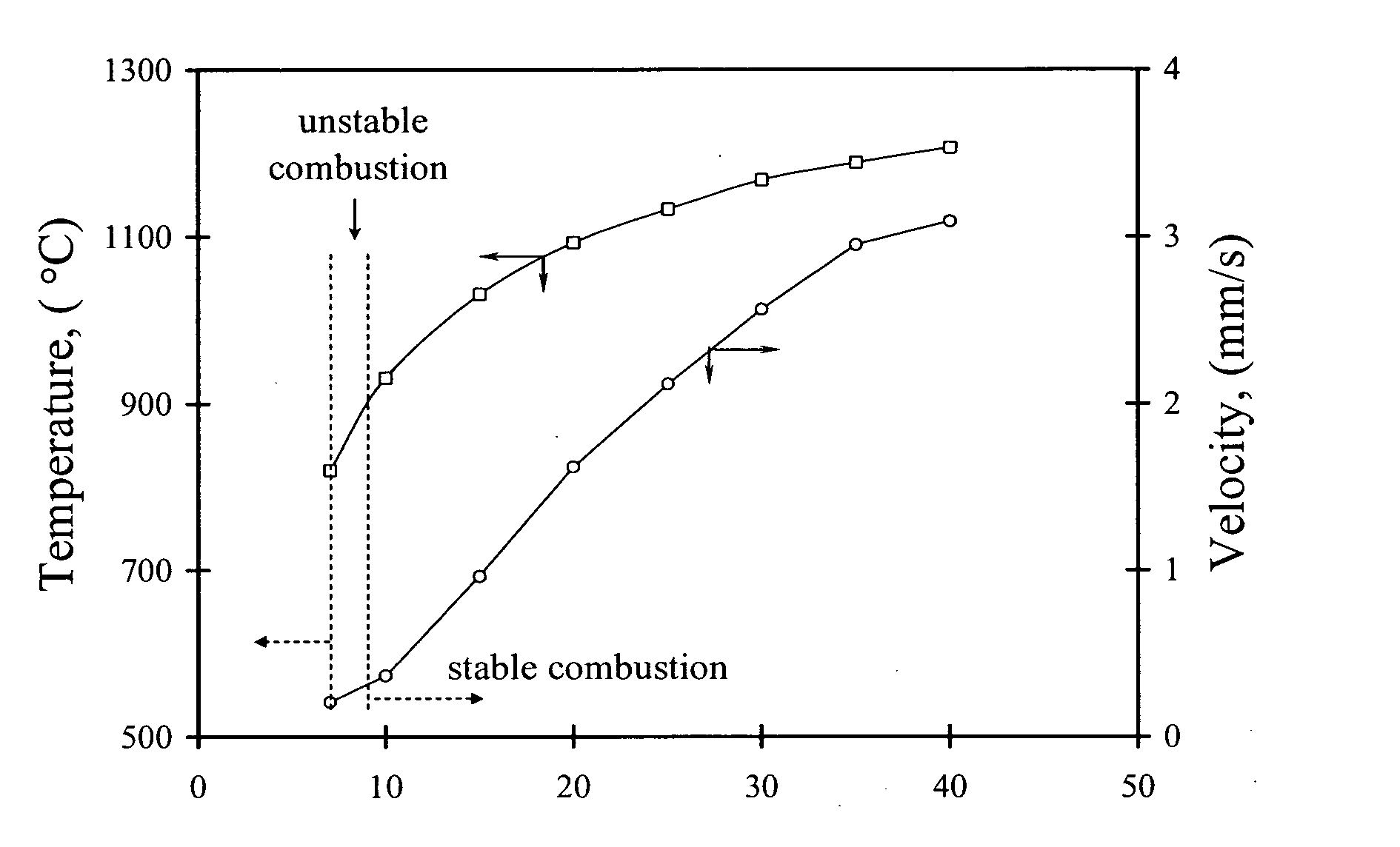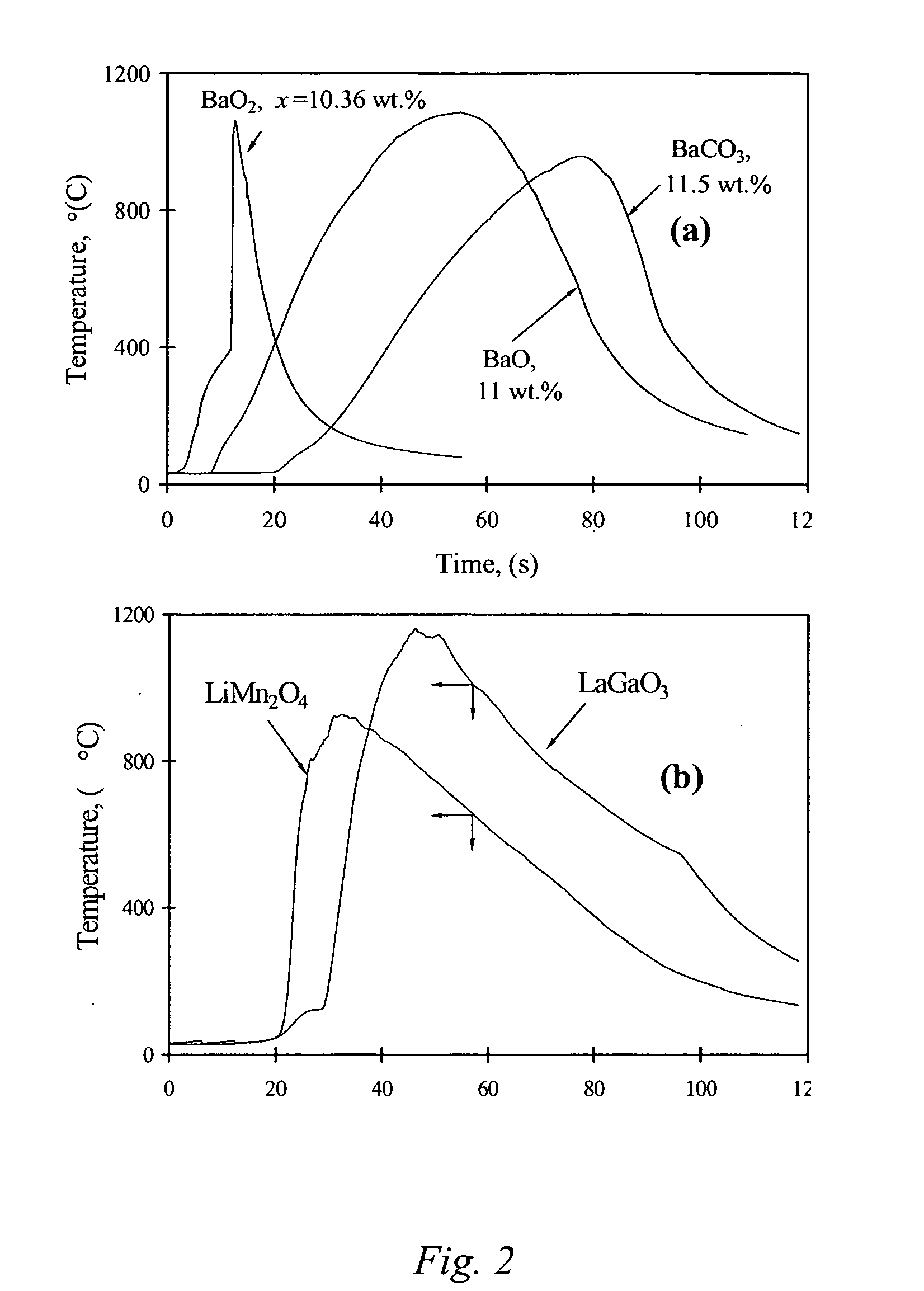Carbon combustion synthesis of oxides
a technology of carbon combustion and oxides, applied in the direction of manganates/permanentates, nickel compounds, silicon compounds, etc., can solve the problems of large size reduction, high energy consumption, and high cost of high-temperature furnaces and high-energy consumption
- Summary
- Abstract
- Description
- Claims
- Application Information
AI Technical Summary
Benefits of technology
Problems solved by technology
Method used
Image
Examples
example 1
[0051] This Example serves to illustrate the use of CCSO to synthesize SrTiO3.
[0052] The ferroelectric oxide SrTiO3 was synthesized from a reactant mixture comprising (in % by mass): strontium oxide (SrO) 50.42, titanium dioxide (TiO2) 38.87 and carbon powder 10.71. The loose mixture was placed into a quartz tube, to which oxygen was fed at a flow rate of 5 l / m. Following ignition, a combustion front formed and propagated at a velocity of 0.32 mm / s, maximum temperature ˜1050° C. An XRD pattern of the product showed that the product was pure SrTiO3 (FIG. 8).
example 2
[0053] This Example serves to illustrate the use of CCSO to synthesize BaTiO3.
[0054] The ferroelectric oxide BaTiO3 was synthesized from a reactant mixture comprising (in % by mass): barium carbonate (BaCO3) 49.68, titanium dioxide (TiO2) 20.11 and carbon powder 30.21. The loose mixture was placed into a quartz tube, to which oxygen was fed at a flow rate of 10 l / m. Following ignition, a combustion front formed and propagated at a velocity of 2.1 mm / s, maximum temperature ˜1190° C. An XRD pattern of the product showed that it was pure BaTiO3.
example 3
[0055] This Example serves to illustrate the use of CCSO to synthesize CoFe2O4.
[0056] The hard magnetic ferrite CoFe2O4 was synthesized from a reactant mixture comprising (in % by mass): cobalt oxide (CoO) 28.52, iron oxide (Fe2O3) 60.77 and carbon powder 10.71. The loose mixture was placed into a quartz tube, to which oxygen was fed at a flow rate of 5 l / m. Following ignition, a combustion front formed and propagated at a velocity of 0.7 mm / s, maximum temperature ˜980° C. An XRD pattern of the product showed that it was pure CoFe2O4 (FIG. 9).
PUM
| Property | Measurement | Unit |
|---|---|---|
| particulate size | aaaaa | aaaaa |
| temperatures | aaaaa | aaaaa |
| particle diameter | aaaaa | aaaaa |
Abstract
Description
Claims
Application Information
 Login to View More
Login to View More - R&D
- Intellectual Property
- Life Sciences
- Materials
- Tech Scout
- Unparalleled Data Quality
- Higher Quality Content
- 60% Fewer Hallucinations
Browse by: Latest US Patents, China's latest patents, Technical Efficacy Thesaurus, Application Domain, Technology Topic, Popular Technical Reports.
© 2025 PatSnap. All rights reserved.Legal|Privacy policy|Modern Slavery Act Transparency Statement|Sitemap|About US| Contact US: help@patsnap.com



